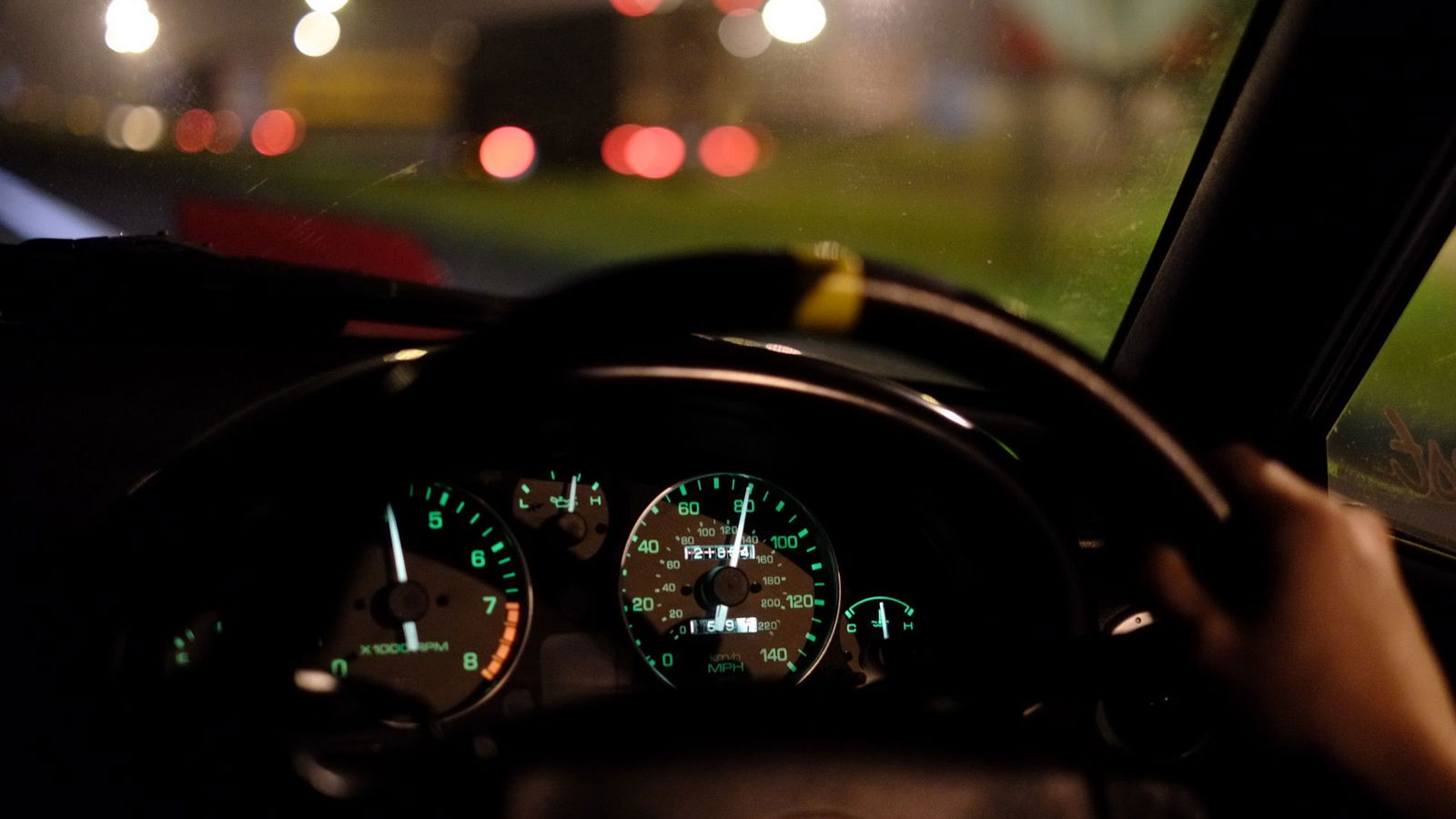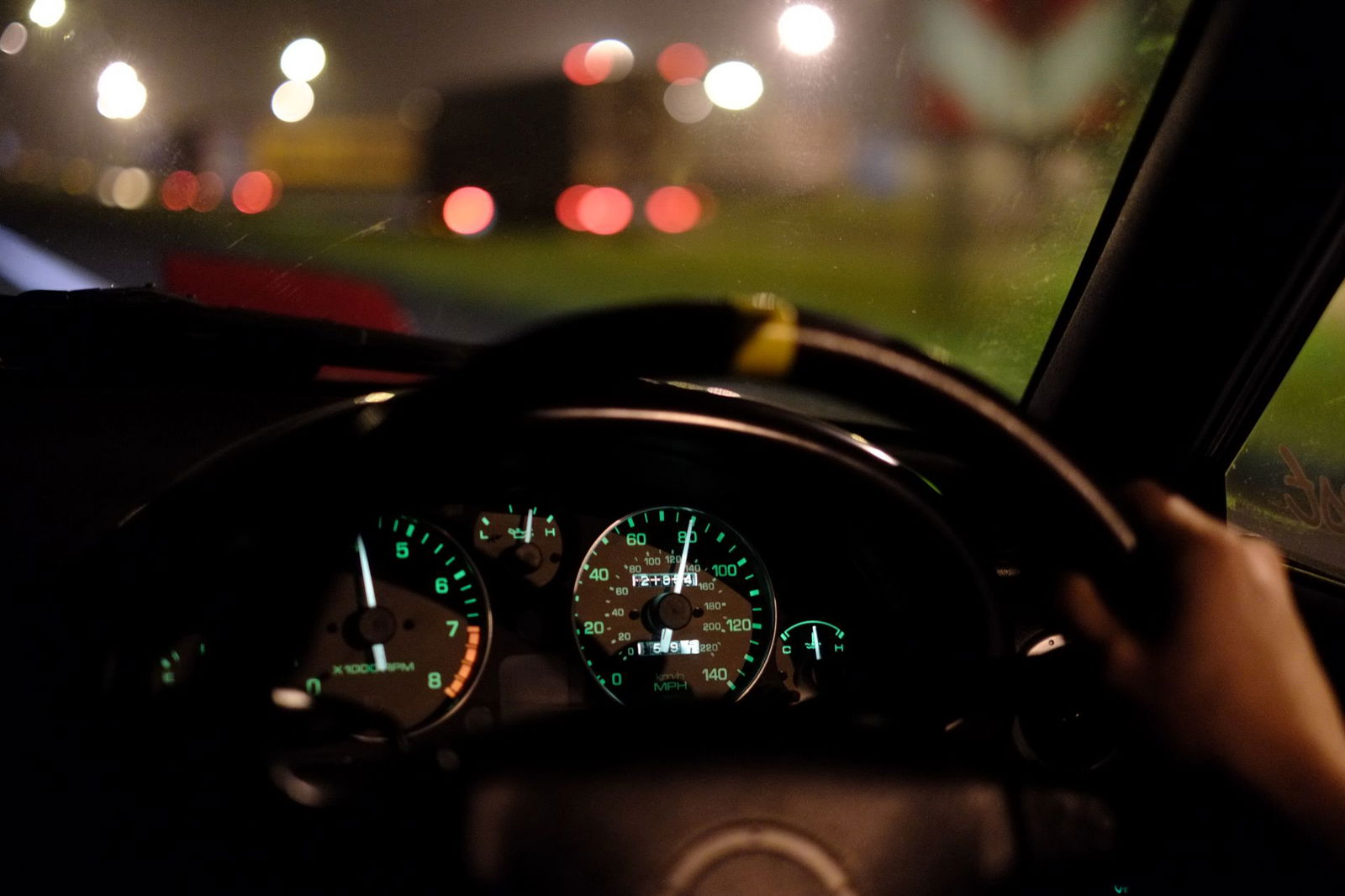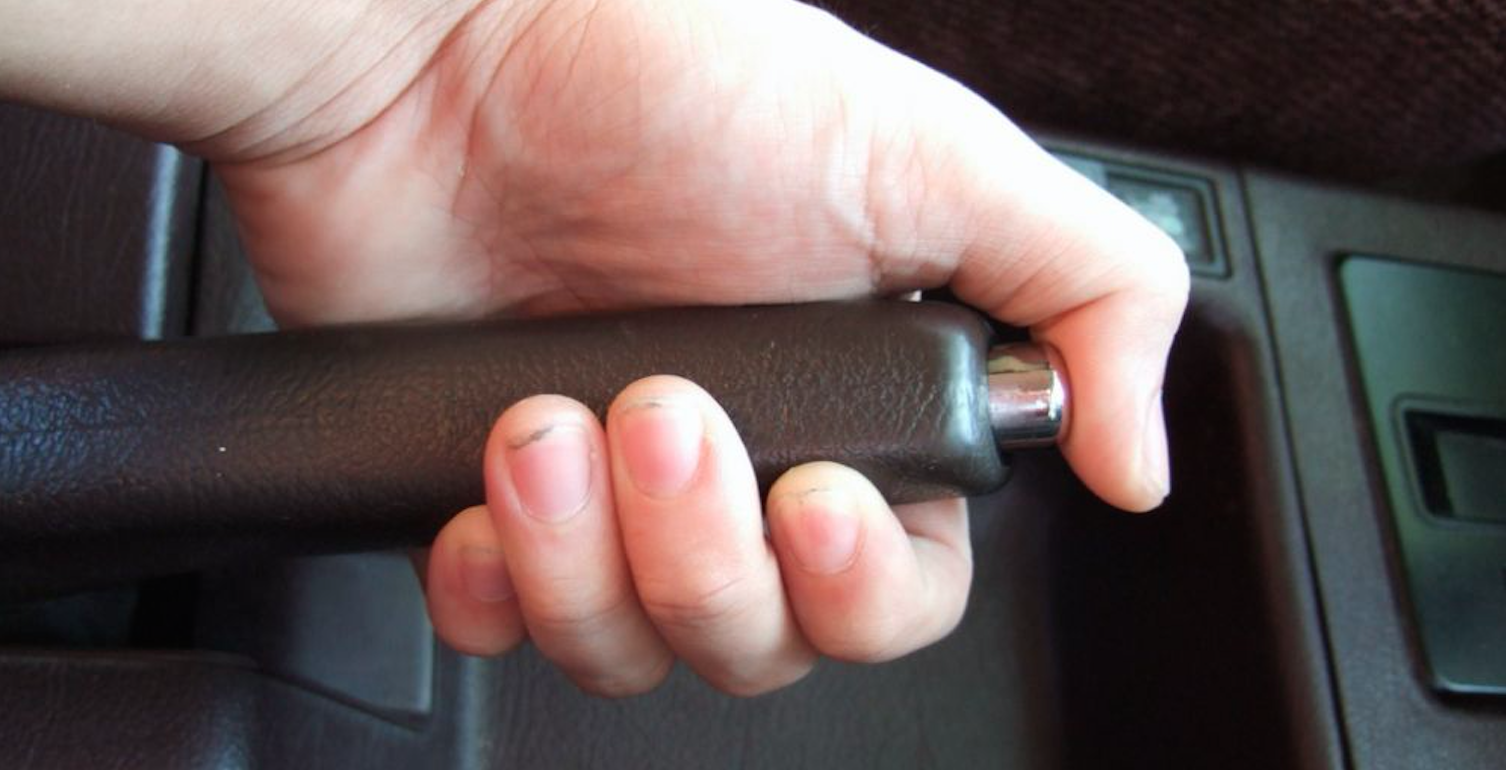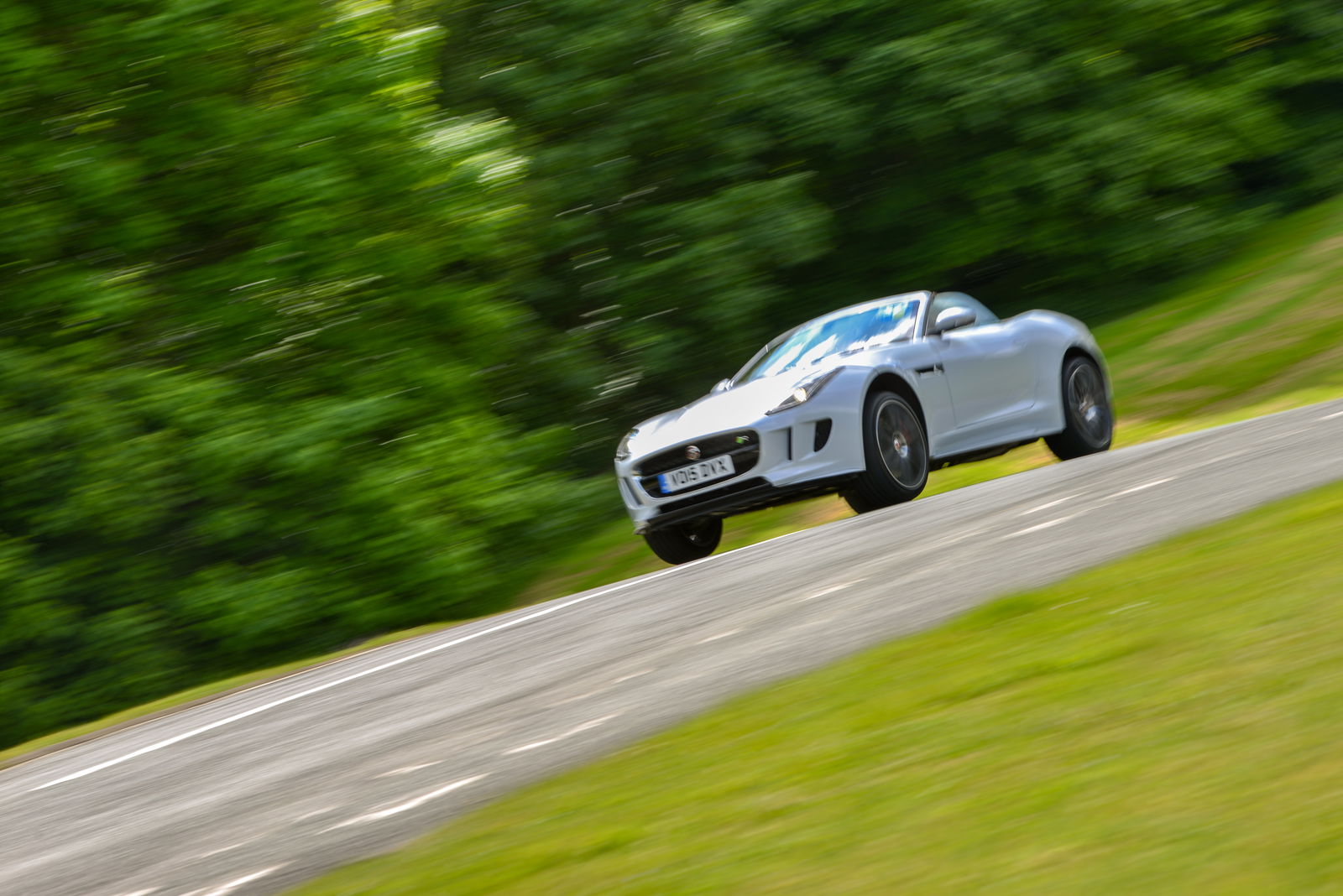6 Things To Unlearn From Your Driving Test

1. 'Feeding' the wheel

The ‘pull-push’ method, also known as ‘feeding the wheel’, is argubly the most important ‘driving test’ technique. It’s a method that has been taught for years; even the police force use it when training Class 1 drivers. The idea behind the technique is that it allows you to keep both hands on the wheel at all times, therefore making you a ‘safer’ driver.
Unfortunately, this is nothing more than ill-advised rhetoric. Feeding the wheel is inefficient, outdated and in some circumstances, it can be dangerous. For example, imagine that you’re on a country road and you approach a blind corner. You enter what you think is a shallow bend, but as you turn in, the corner starts to decrease in radius. To avoid running wide, you need to add more steering lock quickly but smoothly; something you can’t do effectively when feeding the wheel.

If you attempt to ‘pull and push’ the wheel, you’ll end up making jagged inputs at a point where the car is already unstable. And if the corner continues to tighten, the push and pull technique will be too slow, and you’ll end up running wide.
Instead, if you keep both hands on the wheel and cross your arms, you maintain that vital connection with the wheel. You can feel what the front end is doing and you can add steering input progressively. There’s a reason why ARDS qualified racing instructors ask first time track drivers to keep their hands at nine and three.
2. Constantly applying the hand-brake

The handbrake is your best friend on the driving test. Almost every time you stop, you’re required to use it; even after the emergency stop! Thankfully, most drivers come to their senses and drop this ‘bad habit’ once they’ve passed their test.
In reality, there’s no need to handbrake every time you come to a halt. For example, if you’re in stop-start traffic, the foot brake will usually suffice. And if you need to make an emergency stop in a pile-up situation, the last thing you should do is apply the handbrake. Once stopped you should check your mirrors, put the car in gear and pull over to the side.
Don’t get us wrong, we’re not saying that you should never use it, but you don’t need to apply it every time you stop.
3. Checking your mirrors at pre-determined intervals

Every time you set off you should theoretically conduct a six-point check. The process goes (in the UK): look over your left shoulder, check your left exterior mirror, check your rear-view mirror, check the road ahead, check your right mirror and then finally look over your right shoulder. On your test you need to make these checks look super obvious to avoid incurring any minor penalties.
Our problem with this technique is the fact that it turns situational ‘awareness’ into a box-ticking exercise. And as we all know, when you do something simply for the sake of it (in this case, pleasing an instructor), the process ceases to have a meaningful effect.
4. Don't flash other road users

The Highway Code states that you should ‘only flash your headlights to let other road users know that you are there. Do not flash your headlights to convey any other messages’. As a result, you cannot flash your headlights on your driving test, and you cannot react to someone else flashing their lights at you. Now, we understand that in some circumstances this form of communication has the potential to be hazardous, but in most cases we find it to be rather helpful.
Flashing people to say thank you or to let them into a line of traffic is a daily occurrence for most of us. And whatever you might have been told, flashing your lights in the UK is not illegal.
5. Speed is the enemy (it's actually your friend)

Controversially, the driving test in the UK fails to incorporate any form of motorway driving. The majority of your lessons will take place in busy towns or cities where your maximum speed will be limited to 30mph. As a result, young drivers often view speed as the enemy. This isn’t a major problem on crowded streets, but it can play havoc when it comes to driving on motorways.
When merging onto a faster road, it’s vital that you accelerate to match the speed of the adjacent traffic. Unfortunately, learner drivers often get intimidated and slow down on on-ramps. Not only is this dangerous to the learner driver, but it’s also dangerous to drivers travelling at high speed on the main road. If only they knew that mashing the loud pedal is actually safer.
6. Constantly checking your speed

Speeding during your driving test can result in instant failure. As a result, most learners spend the majority of their assessment staring at the speedometer. This is because the test is nothing more than a box-ticking exercise: as long as you’re under the limit, you’re deemed to be safe.
Unfortunately, this is not the case. If you’re doing the speed limit, but not focusing on the road ahead, this is equally (if not more) dangerous than speeding. Thankfully, the more you drive, the more accustomed you become to multi-tasking (checking speed, road conditions and surrounding traffic).
Finally, we want to know from you guys, what pointless things were you told during your driving lessons? Let us know in the comments below!

Comments
My cousins dad made her take a stunt driving course before she got her license.
I was always told to check my rear view mirror every time before indicating left or right. It good to check it before you turn but before indicating is a bit extreme.
Lol driving instructors in the States get scared if you say “yeah race car drivers put their hands at three and nine”.
It’s better driving and more controlled driving, but instructors are scared of the words “racing” and “fast”.
keep the steering wheel turned the same way your car is spining in case of a skid. In other words, not countersteering
In New South Wales Australia, the maximum speed a P plate driver can drive is 90km/hr even when the posted speed limit could be 110km/hr. I can see this causing way more accidents than if the provisional licenced driver could drive at the speed limit. I have a provisional licence and I feel comfortable driving at 110km/hr (in Quesnsland). Surely this reduced speed law would cause more crashes than not having it. (Idk if this makes sense or not.
You’re taught to flash people with your headlights!? I was told to strictly never flash my headlights.
Oh boy how much has the “loud pedal” saved me from different iffy situations.
The principle “If in doubt, flat out” or “if something is wrong, get the hell out of there” seems to work fine.
Usual problems start when even if you make mistakes (hey, everyone does it) and you are basically blocking someone then “You need to flat out get away”, cause that is the usual formula of a crash. If you are not in someones way, they can’t crash into you.
Also the tightening bend example perfect one. Again, fwd/awd needs to go almost if not fully flat out, in order to pull yourself out of the corner. I’ve seen panic-braking in the middle of a corner do more damage in a bend than a flat-out save attempt. If you are too fast in to begin with, you are scewed anyway.
Can be trickier a bit for RWD cars, but still… “If something is wrong, get the f out of there” :D
About 5 years ago, a friend of mine went into do his driving test here in Austin. While going through everything, he was told by the instructor “Don’t use the turn signals, it just confuses people”.
Now, I don’t know if this was just the instructor being an idiot (I hope so) or what. How ever, with how people drive around this city I can understand the idea that turn signals are confusing for some motorists. Mainly the dumbasses that get over more than half way into my lane before deciding to use the turn signal long enough for the light to come on once. I hate them more than the people who don’t use the signal at all.
Agree with everyrhing alltho’ I am not famliar with the handbrake thingy. Never did that during my test or lessons.
This has to be one of the worst articles I’ve seen on here.
The reason you put your handbrake on when you come to a stop is so you don’t blind people behind you with your brake lights.
And I’m always checking my mirrors to ensure I know exactly what’s around me. Vital on busy motorways if you are using correct lane discapline as you are able to judge when is best to move out, overtake the car in front and pull back in effecting other road users as little as possible.
Actually I don’t even agree with the speed argument either. My driving test included pulling out of a 30mph zone onto a busy 60mph A road and I done it at full throttle. I never got marked down for it?
Pagination